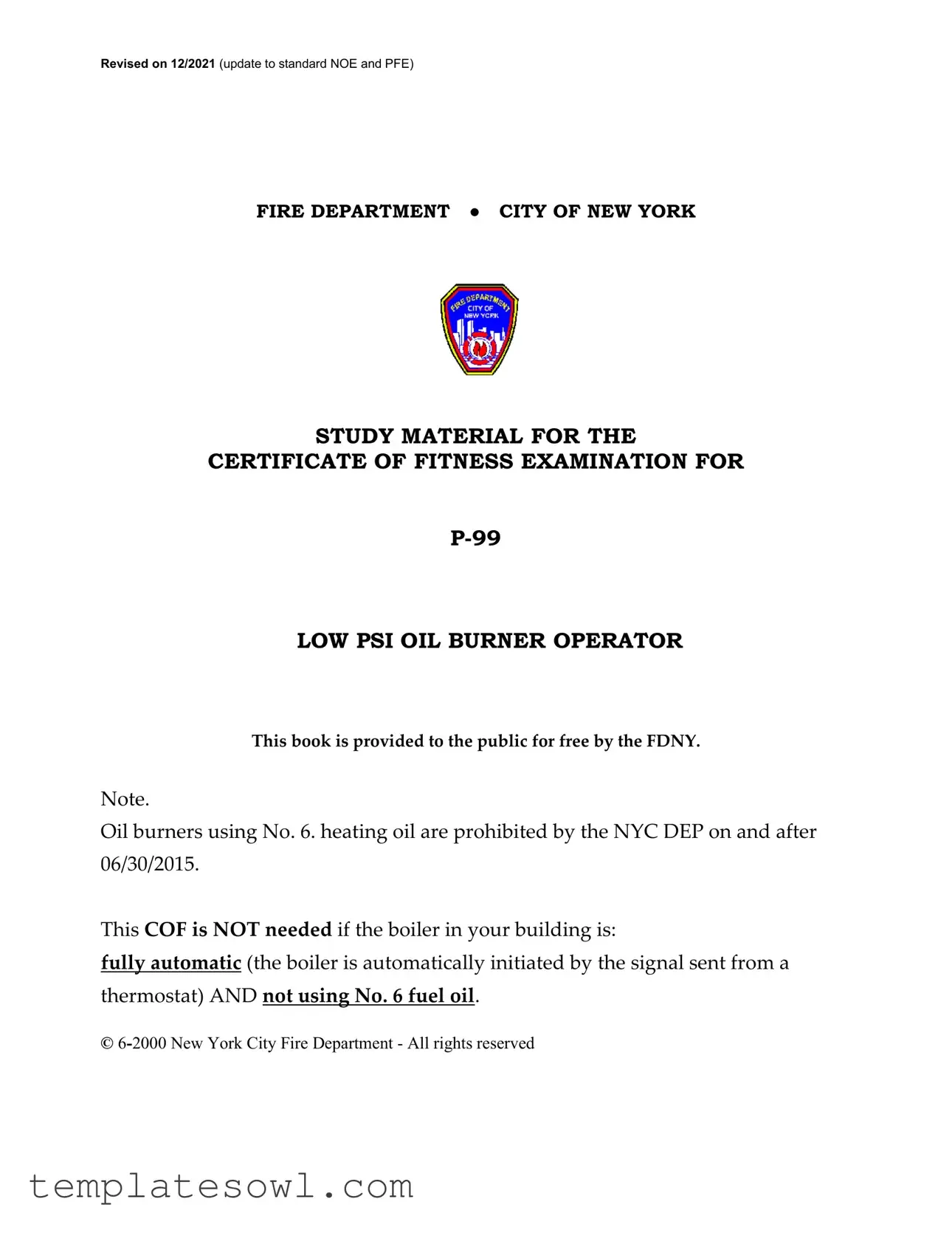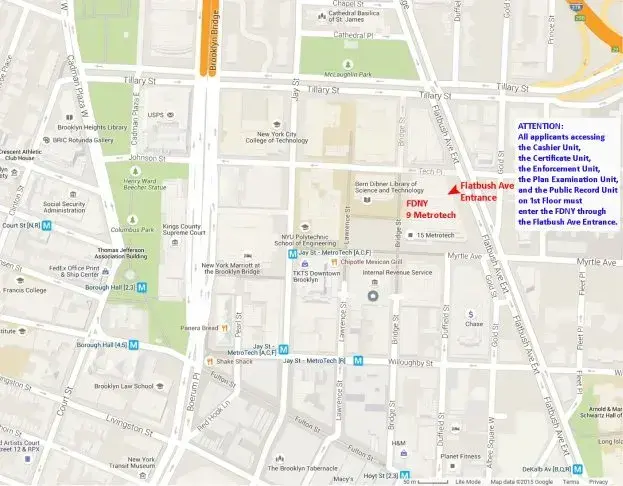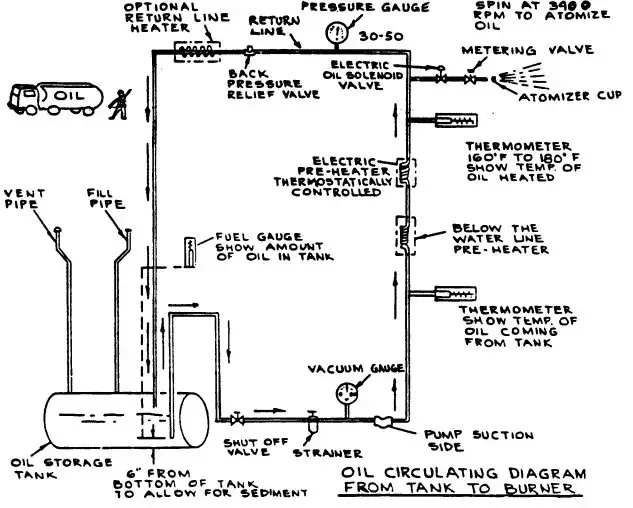EXAM SPECIFIC INFORMATION FOR
P-99 CERTIFICATE OF FITNESS
Save time and submit application online!
Applicants who submitted and paid online for an exam before arriving at the FDNY will not need to wait in line to enter the FDNY.
It can take about 30 minutes to complete. Completing application and paying online will eliminate waiting outside in the long lines.
Simplified instructions for online application and payment can be found here: http://www1.nyc.gov/assets/fdny/downloads/pdf/business/fdny-business-cof-individuals-short.pdf
Create an Account and Log in to:
http://fires.fdnycloud.org/CitizenAccess/SAML/NYCIDLogin.aspx
REQUIREMENTS FOR CERTIFICATE OF FITNESS APPLICATION
General requirements:
Review the General Notice of Exam: http://www1.nyc.gov/assets/fdny/downloads/pdf/business/general-notice-of-exam-cof.pdf
Special requirements for the P-99 Certificate of Fitness: None.
Application fee (Cash is NO LONGER ACCEPTED):
Pay the $25 application fee online or in person by one of the following methods:
•Credit card (American Express, Discover, MasterCard, or Visa)
•Debit card (MasterCard or Visa)
•In person: Personal or company check or money order (made payable to the New York City Fire Department)
A convenience fee of 2% will be applied to all credit card payments.
For fee waivers submit: (Only government employees who will use their COF for their work- related responsibilities are eligible for fee waivers.)
•A letter requesting fee waiver on the Agency’s official letterhead stating applicant full name, exam type and address of premises; AND
•Copy of identification card issued by the agency
REQUIREMENTS FOR ALTERNATIVE ISSUANCE PROCEDURE (AIP)
The P-98 Certificate of Fitness can be obtained by the alternative issuance procedure. Qualified applicants should review and complete the P-99 Certificate of Fitness Alternative Issuance Procedure Application Affirmation Form:
https://www1.nyc.gov/assets/fdny/downloads/pdf/business/cof-p99-aip.pdf
The AIP applicants must submit the application, required documents and payment on FDNY Business:
https://fires.fdnycloud.org/



